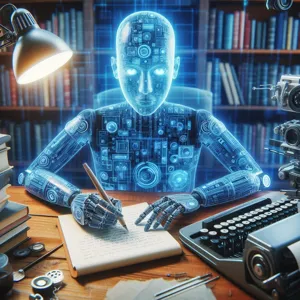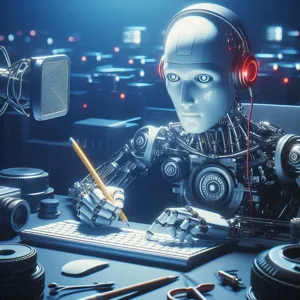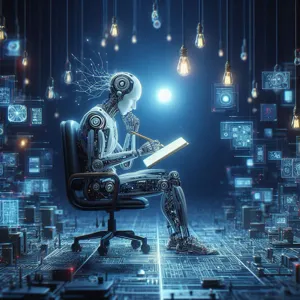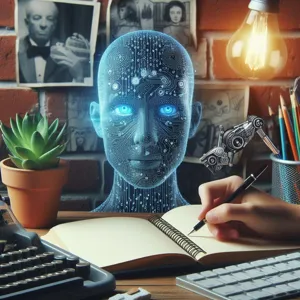In a world that often feels cluttered with distractions, unlocking creativity can be a challenge, yet it is vital for both personal fulfillment and professional success.
The right book can serve as a beacon of inspiration, guiding you through the labyrinth of your imagination and encouraging you to explore new ideas and perspectives. Whether you’re an artist seeking fresh concepts, a writer battling a creative block, or simply someone who craves a spark of ingenuity in daily life, literature has the power to ignite your creative spirit. In this blog post, we’ll delve into a curated selection of the best books designed to awaken your imagination and expand your creative horizons. From thought-provoking non-fiction to enchanting novels, these titles promise to not only inspire you but also equip you with the tools to unleash your full creative potential. Join us on this literary journey and discover how these transformative reads can help you unlock the hidden depths of your creativity!
1. Introduction to Creativity and Imagination
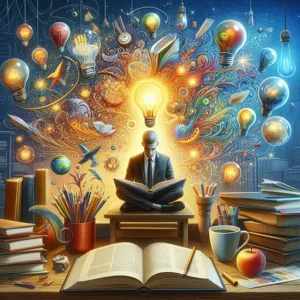
Creativity and imagination are the lifeblood of innovation, expression, and problem-solving. They go hand in hand, breathing life into the mundane and transforming the ordinary into the extraordinary. At their core, creativity is the ability to think outside the box, to connect disparate ideas in novel ways, and to envision possibilities that have yet to be realized. Imagination, on the other hand, is the fertile ground where these creative seeds are sown, allowing us to explore uncharted territories of thought and experience.
In today’s fast-paced world, where routines can stifle our innate creative instincts, it becomes increasingly essential to nurture these faculties. Whether you’re an artist, a writer, an entrepreneur, or simply someone looking to inject a little more wonder into your everyday life, tapping into your creativity can lead to profound personal and professional growth. The good news is that creativity is not an exclusive trait bestowed upon a select few; it is a skill that can be cultivated and sharpened over time.
This blog post aims to explore some of the best books that serve as gateways to unlocking creativity and igniting your imagination. From timeless classics that have inspired generations to contemporary works that push boundaries, these texts offer insights, exercises, and anecdotes that can stimulate your creative thinking. Prepare to embark on a journey of discovery, as we delve into the pages that promise to awaken your inner visionary and inspire you to see the world through a more imaginative lens.
2. The Role of Reading in Enhancing Creativity
Reading is a powerful catalyst for creativity, acting as both a wellspring of inspiration and a gateway to new perspectives. When we immerse ourselves in the pages of a book, we not only escape into different worlds but also engage with the thoughts, ideas, and imaginations of diverse authors. Each narrative, whether fictional or factual, offers a unique lens through which we can view life, urging us to think beyond our own experiences.
As we flip through the chapters, our brains are activated in ways that stimulate creative thought. Reading enhances our vocabulary, enriches our understanding of language, and encourages the exploration of complex concepts. It challenges our cognitive abilities, inviting us to draw connections between seemingly unrelated ideas, thus fostering innovative thinking. The act of visualizing characters, settings, and scenarios demands that we stretch our imaginations, allowing us to practice the very skills necessary for creative expression.
Moreover, the variety of genres available can cater to the multifaceted nature of creativity. A well-crafted novel might evoke emotions and provoke thoughts about the human condition, while a thought-provoking non-fiction book can inspire new ideas and strategies in our personal or professional lives. Poetry invites us to play with language, while biographies of visionary thinkers can serve as blueprints for our own creative journeys.
In essence, reading not only nourishes our creativity but also provides us with the tools to articulate our thoughts and ideas more effectively. By incorporating a regular reading habit into our lives, we open ourselves up to a wealth of inspiration, enhancing our ability to think creatively and innovate in our own endeavors. So, whether you’re seeking adventure, wisdom, or simply a fresh perspective, picking up a book can be the key to unlocking the boundless potential of your imagination.
3. Classic Books That Inspire Creative Thinking
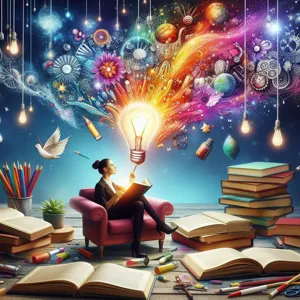
When it comes to igniting your imagination, classic literature holds a treasure trove of inspiration waiting to be unearthed. These timeless works not only showcase masterful storytelling but also delve deep into the human experience, encouraging us to think beyond the ordinary and embrace a world of possibilities. Here are a few classic books that can serve as catalysts for your creative thinking.
**1. “Pride and Prejudice” by Jane Austen**
Austen’s keen observations of society, class, and relationships are wrapped in a narrative that is both witty and profound. Through the journey of Elizabeth Bennet and her struggles with societal expectations, readers are invited to reflect on their own lives and the intricacies of human connection. The vivid characters and their evolving relationships inspire us to explore our own creativity in understanding diverse perspectives.
**2. “1984” by George Orwell**
This dystopian masterpiece challenges readers to think critically about power, control, and the nature of truth. Orwell’s chilling depiction of a totalitarian regime serves as a powerful reminder of the importance of free thought and individual creativity. As we navigate through the pages, we are compelled to question the status quo and envision a world where our imagination can be a tool for resistance and freedom.
**3. “The Picture of Dorian Gray” by Oscar Wilde**
Wilde’s exploration of beauty, morality, and the consequences of a life devoted to hedonism sparks a profound conversation about the nature of art and creativity. Dorian Gray’s descent into vanity and excess serves as a cautionary tale that encourages readers to reflect on their own creative pursuits. This novel inspires us to seek depth and meaning in our work, reminding us that true creativity often requires introspection and self-awareness.
**4. “The Great Gatsby” by F. Scott Fitzgerald**
Fitzgerald’s vivid portrayal of the Jazz Age and its excesses is a rich tapestry of ambition, love, and disillusionment. The lush descriptions and intricate symbolism invite readers to immerse themselves in a world where dreams are both pursued and shattered. Through Gatsby’s quest for an idealized life, we are encouraged to explore our aspirations and the narratives we create around them, fueling our own creative processes.
These classics not only entertain but also challenge us to think deeply about our own beliefs, desires, and the world around us. As you dive into their pages, allow the characters’ journeys and the authors’ insights to spark your imagination, opening doors to new ideas and creative endeavors. Whether you’re an artist, writer, or simply someone looking to expand your perspective, these timeless works will undoubtedly inspire you to unlock your creative potential.
4. Modern Must-Reads for Creative Minds
In a world brimming with information and inspiration, the right book can serve as a powerful catalyst for creativity. If you’re seeking to rejuvenate your imagination and explore fresh perspectives, consider diving into these modern must-reads that resonate deeply with creative minds. Each of these titles not only offers profound insights but also ignites the spark of originality in ways that are both accessible and inspiring.
**1. “Big magic: Creative Living Beyond Fear” by Elizabeth Gilbert**
In this illuminating exploration of creativity, Gilbert encourages readers to embrace their curiosity and let go of fear. Her candid reflections on the creative process remind us that creativity is not just a talent but a way of living. Through personal anecdotes and practical advice, she inspires us to pursue our passions and find joy in the creative journey, making it a must-read for anyone looking to unleash their inner artist.
**2. “Steal Like an Artist: 10 Things Nobody Told You About Being Creative” by Austin Kleon**
Kleon’s witty and engaging guide is a breath of fresh air for anyone feeling stuck in their creative endeavors. With his signature blend of humor and wisdom, he encourages readers to embrace influence rather than shy away from it. His ten transformative principles for fostering creativity serve as a practical roadmap, empowering you to unlock your creative potential by borrowing and remixing ideas in unique ways.
**3. “The Artist’s Way: A Spiritual Path to Higher Creativity” by Julia Cameron**
A classic in the realm of creative self-help, Cameron’s groundbreaking book remains relevant today. Through a series of exercises and activities, she guides readers through a twelve-week program designed to recover their creativity. By addressing common creative blocks and fostering a deeper connection to one’s artistic self, “The Artist’s Way” helps readers rediscover their creative voice, making it an essential read for those yearning to revitalize their artistic spirit.
**4. “Creative Confidence: Unleashing the Creative Potential Within Us All” by Tom Kelley and David Kelley**
Written by the founders of IDEO, this book emphasizes that creativity is not just for the select few but is a skill that can be cultivated by anyone. With a wealth of real-world examples and practical strategies, the Kelleys challenge the notion that creativity is innate. Instead, they provide readers with the tools to embrace their creative instincts and apply them to everyday challenges, ensuring that each reader walks away feeling empowered and inspired.
These modern must-reads are not just books; they are invitations to embark on a journey of self-discovery and imaginative exploration. By immersing yourself in their pages, you’re not only igniting your imagination but also arming yourself with the wisdom and techniques needed to unleash your creative potential. Whether you’re an artist, writer, or simply someone looking to infuse more creativity into your life, these titles will undoubtedly inspire you to think outside the box and embrace the beauty of creative expression.
5. Books on the Creative Process and Techniques
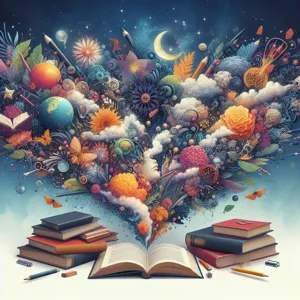
When it comes to unlocking creativity, understanding the creative process itself can be just as important as diving into imaginative narratives. Books focusing on the creative process and techniques offer invaluable insights that not only inspire but also guide you in harnessing your own creative potential. These works delve into the mechanics of creativity, exploring how it functions and how you can cultivate it in your daily life.
One standout title in this category is “The Artist’s Way” by Julia Cameron. This transformative guide encourages readers to reconnect with their inner creativity through exercises like morning pages and artist dates. Cameron’s techniques are designed to liberate your creative spirit, allowing you to break through mental barriers and rediscover joy in self-expression.
Another essential read is “Big Magic: Creative Living Beyond Fear” by Elizabeth Gilbert. Gilbert invites readers to embrace curiosity and explore the mysterious nature of inspiration. With her candid anecdotes and thoughtful reflections, she demystifies the creative process and encourages you to pursue your passions without the weight of fear and self-doubt.
For those looking for a more structured approach, “Steal Like an Artist” by Austin Kleon is a refreshing take on creativity that celebrates the idea that nothing is original. Kleon shares ten transformative principles that can help you learn from others while fostering your unique voice. His engaging style and practical advice make this book a must-read for anyone feeling stuck or uninspired.
Lastly, “Creative Confidence” by Tom and David Kelley emphasizes the importance of nurturing creativity in every individual. The Kelley brothers, co-founders of IDEO, share practical strategies for overcoming self-imposed limitations and unleashing the creative potential that lies within each of us. Their approach is both motivational and actionable, encouraging readers to take risks and experiment without fear of failure.
By immersing yourself in these insightful texts, you can gain a deeper understanding of the creative process and discover techniques that resonate with your personal style. Whether you’re an aspiring artist, a seasoned professional, or simply someone looking to infuse more creativity into your life, these books will serve as a guiding light, igniting your imagination and fueling your creative journey.
6. Biographies of Creative Influencers
Biographies of creative influencers offer a unique insight into the minds and lives of some of the most imaginative thinkers and artists throughout history. These narratives not only chronicle their achievements but also delve deep into the struggles, failures, and pivotal moments that shaped their creative journeys. By exploring the lives of these individuals, readers can glean valuable lessons, inspiration, and practical wisdom that can be applied to their own creative endeavors.
Consider diving into the life of Steve Jobs, for instance. His biography reveals a relentless pursuit of perfection and an unyielding belief in the power of innovation. Jobs’ unconventional path—marked by both triumphs and setbacks—serves as a reminder that creativity often flourishes in the face of adversity. Similarly, the memoirs of artists like Frida Kahlo or musicians like Leonard Cohen unravel the layers of their creative processes, showcasing how their personal experiences influenced their art.
These biographies often highlight the importance of collaboration, mentorship, and the influence of various cultural movements, encouraging readers to think beyond their own experiences and consider the broader context of creativity. By immersing yourself in the lives of these influential figures, you not only ignite your imagination but also cultivate a deeper appreciation for the diverse paths creativity can take. Whether you’re an aspiring artist, writer, or simply someone looking to infuse more creativity into your life, exploring these biographies can provide the spark you need to unlock your own imaginative potential.
7. Fictional Works That Spark Imagination
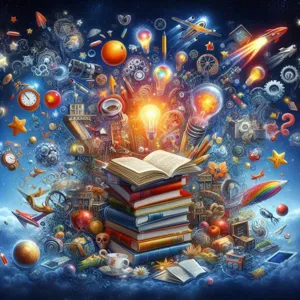
Fiction has a unique power to transport us to worlds uncharted, where the limits of reality dissolve and the imagination takes flight. Engaging with fictional works can be a catalyst for creativity, inspiring new ideas and perspectives that enrich our own creative endeavors. These narratives, woven with complex characters and intricate plots, not only entertain but also challenge our thinking and expand our understanding of the human experience.
One standout title is **”The Night Circus” by Erin Morgenstern**, a mesmerizing tale of a magical competition between two young illusionists. set against the backdrop of a mysterious circus that appears only at night, Morgenstern’s lush prose and vivid imagery invite readers to immerse themselves in a world where the boundaries of reality are blurred, encouraging us to explore the limitless possibilities of our own creativity.
Another remarkable work is **”The Hitchhiker’s Guide to the Galaxy” by Douglas Adams**. This satirical science fiction classic is not just a humorous romp through space; it’s a profound reflection on existence, choice, and the absurdities of life. Adams encourages us to think outside the box, instilling a sense of wonder and curiosity about the universe that can inspire innovative thinking in our own lives.
**”The Alchemist” by Paulo Coelho** is another gem that ignites the imagination with its allegorical narrative about pursuing one’s dreams. Coelho’s exploration of fate and personal legend resonates deeply, urging readers to follow their passions and recognize the signs that the universe presents. This novel serves as a reminder that the journey of creativity often requires courage and introspection.
Diving into these fictional works not only entertains but also unlocks new avenues of thought, pushing the boundaries of what we believe is possible. Whether it’s through the fantastical, the absurd, or the deeply philosophical, these stories invite readers to dream bigger, think differently, and ultimately, ignite the flames of their imagination. So grab a cozy blanket, settle into your favorite reading nook, and allow these literary treasures to inspire your own creative journey.
8. Non-Fiction Books on Innovation and Ideas
When it comes to sparking creativity and broadening your imaginative horizons, non-fiction books on innovation and ideas can be invaluable resources. These works not only provide insights into the minds of great thinkers and innovators but also offer practical tools and frameworks that can help you harness your own creative potential.
Consider diving into books like “The Innovator’s Dilemma” by Clayton Christensen, which explores how new technologies can disrupt established industries and the importance of embracing change to foster innovative thinking. Christensen’s compelling case studies illuminate the delicate balance between sustaining existing business models and venturing into uncharted territories of creativity.
Another must-read is “Creative Confidence” by Tom and David Kelley, founders of the renowned design firm IDEO. This book emphasizes the idea that creativity is not an inherent trait but a skill that can be cultivated. Through engaging anecdotes and actionable advice, the Kelleys inspire readers to break free from self-doubt and embrace their innate creative abilities.
“Where Good Ideas Come From” by Steven Johnson takes you on a fascinating journey through the history of innovation, revealing how great ideas often emerge from collaborative environments and the intersections of different disciplines. Johnson’s exploration of the “adjacent possible” concept encourages readers to see the connections between seemingly unrelated fields, sparking new avenues for creative thought.
Lastly, don’t overlook “Big Magic” by Elizabeth Gilbert, which delves into the nature of inspiration and the importance of nurturing your creative side. Gilbert shares her personal experiences and offers encouragement for anyone looking to embrace the messiness of the creative process.
By immersing yourself in these non-fiction works, you can gain fresh perspectives on creativity, learn from the successes and failures of others, and ultimately unlock new pathways for your own imaginative endeavors. Whether you’re an artist, entrepreneur, or simply someone looking to reignite your creative spark, these books serve as a guiding light, illuminating the endless possibilities that lie ahead.
9. Poetry and Its Impact on Creative Expression
Poetry, often seen as an enigmatic art form, holds a profound power to unlock the doors of creativity. Its unique ability to distill complex emotions and thoughts into just a few carefully chosen words allows readers to engage with language in a deeply personal and imaginative way. The rhythmic quality of poetry, combined with its evocative imagery, invites us to explore new perspectives and feelings that we may not have fully articulated ourselves.
Reading poetry can be a transformative experience, as it encourages us to slow down and savor each line, inviting reflection and introspection. Works by poets such as Mary Oliver, Rainer Maria Rilke, and Pablo Neruda not only resonate with our individual experiences but also inspire us to express our own creativity. Their vivid depictions of nature, love, and the human condition offer a fountain of inspiration that can ignite the spark of imagination within us.
Moreover, writing poetry is an equally impactful practice for fostering creative expression. The act of crafting verses challenges us to think outside the box and break free from conventional structures. Whether it’s experimenting with rhyme, meter, or free verse, poetry allows us to play with language and explore our innermost thoughts in a way that is both freeing and exhilarating. Engaging with poetry—be it through reading or writing—can serve as a powerful catalyst for creative thought, helping us to articulate our passions, fears, and dreams in a manner that resonates deeply with ourselves and others.
Incorporating poetry into your creative routine—whether by keeping a journal of your own verses or setting aside time to read the works of established poets—can significantly enhance your imaginative capabilities. As you immerse yourself in the world of poetry, you’ll likely find that your creative juices begin to flow more freely, enabling you to see the world through a more vibrant and inspired lens. So, if you’re looking to unlock your creativity, grab a collection of poetry and allow its magic to awaken your imagination.
10. Graphic Novels and Visual Storytelling
When it comes to unlocking creativity, few mediums are as potent as graphic novels and visual storytelling. These artful creations blend intricate illustrations with compelling narratives, offering a unique experience that can ignite your imagination in ways traditional texts cannot. The combination of visuals and words invites readers into a vibrant world where ideas leap off the page, encouraging a deeper connection with the story and its characters.
Graphic novels, such as *Persepolis* by Marjane Satrapi or *Maus* by Art Spiegelman, exemplify how illustrations can enhance thematic depth. They tell profound stories, often touching on social issues, personal journeys, and historical contexts, all while employing a visual language that stimulates both the mind and the heart. The artwork captures emotions and moods, often conveying subtleties that words alone might struggle to express.
Moreover, the structure of graphic novels can inspire creativity by demonstrating how to convey complex narratives through pacing, panel arrangement, and visual symbolism. Readers learn to observe details in artwork, encouraging them to think critically about how visuals complement and enhance storytelling. This interplay can be a powerful catalyst for your own creative endeavors, whether you’re a writer, artist, or simply someone looking to break free from conventional thinking.
For those seeking to explore visual storytelling further, delving into works like *Sandman* by Neil Gaiman or *Saga* by Brian K. Vaughan can expand your creative horizons. These graphic narratives blend genres, challenge norms, and push boundaries, showcasing how storytelling can be reimagined.
In addition, the graphic novel format can serve as an accessible entry point for those who may feel intimidated by traditional prose. The combination of art and text can draw in reluctant readers, allowing them to engage with stories they might otherwise overlook. This accessibility can inspire new ideas and perspectives that might not have surfaced through conventional reading alone.
So, if you’re looking to unlock your creativity, embrace the world of graphic novels and visual storytelling. Allow the vibrant illustrations and innovative narratives to transport you to new realms of imagination, where every page turn reveals the potential for inspiration and artistic exploration.
11. Self-Help Books for Developing a Creative Mindset
When it comes to unlocking creativity, the right mindset can make all the difference. Self-help books focused on fostering a creative mindset offer invaluable insights and practical strategies to help you harness your imagination and think outside the box. These books often blend psychology with actionable exercises, encouraging readers to challenge their perceptions, embrace uncertainty, and approach problems with a fresh perspective.
One standout title in this category is “Big Magic: Creative Living Beyond Fear” by Elizabeth Gilbert. With her warm and engaging style, Gilbert invites readers to explore the mysteries of creativity while encouraging them to let go of the fear that can stifle original thought. She emphasizes the importance of curiosity and playfulness, reminding us that creativity is not just for the chosen few but a gift available to all.
Another must-read is “The Artist’s Way” by Julia Cameron, which serves as a roadmap for reclaiming your creative self. Through her 12-week program, Cameron provides exercises like morning pages and artist dates to help you reconnect with your inner artist and overcome self-doubt. This transformative journey encourages readers to view creativity as a habit rather than a sporadic burst of inspiration.
Additionally, “Steal Like an Artist” by Austin Kleon offers a refreshing perspective on creativity, encouraging readers to embrace influence and collaboration while emphasizing that originality is often born from remixing existing ideas. This book is a celebration of the creative process, reminding us that no idea is entirely new, and that sharing and borrowing from others can lead to innovative breakthroughs.
By immersing yourself in these self-help books, you’ll not only gain tools to cultivate a creative mindset but also find inspiration that can spark your imagination in ways you never thought possible. Whether you’re an artist, a writer, or simply someone looking to enhance their everyday creativity, these books can guide you on your journey to unlocking the boundless potential of your mind.
12. Recommended Reading Lists by Creative Professionals
When it comes to igniting your imagination, there’s no better resource than the curated reading lists of creative professionals who have traversed the winding paths of inspiration themselves. These lists often reveal a treasure trove of books that have shaped their artistic journeys, offering insights not only into their creative processes but also into the broader world of ideas.
Take, for example, the recommended reading list from renowned author Neil Gaiman, who often includes classics like “The Wind in the Willows” and “The Once and Future King.” Gaiman’s selections evoke a sense of wonder and adventure, reminding us of the power of storytelling and the timeless tales that continue to spark our imaginations.
Similarly, acclaimed graphic designer Stefan Sagmeister emphasizes the importance of visual storytelling in his reading choices. His list often features influential works on design and art, such as “Understanding Comics” by Scott McCloud, which delves into the intricacies of visual communication and creativity. This blend of visual and literary exploration encourages readers to see the world through multiple lenses, expanding the horizons of their creative potential.
Additionally, the lists compiled by musicians like Patti Smith and writers like Elizabeth Gilbert often blend genres and disciplines, reflecting the interconnectedness of creativity. These recommendations can range from poetry collections to memoirs, each one offering unique perspectives that challenge and inspire.
By exploring these recommended reading lists, you not only gain access to the personal favorites of creative luminaries but also discover new realms of thought and imagination. Whether you’re seeking inspiration for your next project or merely looking to expand your creative toolkit, diving into the books that have influenced the minds of the imaginative elite can unlock new doors to your own creative journey. So grab a notebook, jot down these titles, and prepare to embark on an adventure that promises to invigorate your imagination and fuel your artistic endeavors.
13. How to Create a Personal Reading List for Creativity
Creating a personal reading list specifically designed to ignite your creativity is a transformative process that can open up new avenues of thought and inspiration. Begin by assessing your current interests and areas where you feel your creativity could use a boost. Are you drawn to fiction, poetry, art, or perhaps the science behind creativity itself? Reflect on your passions, as this will guide your selections.
Next, consider incorporating a diverse mix of genres and styles. Fiction can stimulate your imagination by transporting you to new worlds, while non-fiction books on creativity, psychology, or even business can provide practical insights and frameworks for thinking differently. Poetry, with its rhythm and evocative imagery, can inspire you to see the world through a more artistic lens. Don’t shy away from unconventional books that might not seem directly related to creativity; sometimes the most unexpected reads can spark the brightest ideas.
To curate your list, start by exploring recommendations from trusted sources—friends, blogs, or even social media communities focused on creativity. Websites like Goodreads can be invaluable in discovering what others have found inspiring. Take note of the book summaries, reviews, and themes that resonate with you.
Additionally, make it a habit to revisit and revise your list regularly. As you grow and your interests evolve, so too should your reading selections. Set aside dedicated time each week to dive into your chosen books, and allow yourself to reflect on how they influence your creative process. Keep a journal to jot down thoughts, ideas, and any breakthroughs you experience as you read.
Ultimately, your personal reading list should be a dynamic tool—one that not only fuels your imagination but also encourages you to explore new concepts, challenge your thinking, and embrace the boundless potential of your creativity. Happy reading!
14. Conclusion: Making Time for Creative Reading
In conclusion, making time for creative reading is not just a luxury—it’s an essential practice for anyone looking to unlock their imagination and cultivate their creative potential. In our fast-paced world filled with distractions, carving out moments for reading can feel challenging. However, the benefits of immersing yourself in the rich tapestry of stories, ideas, and perspectives found within the pages of a book are immeasurable.
Set aside dedicated time in your daily or weekly schedule for reading. Whether it’s curling up with a novel before bed, diving into a thought-provoking non-fiction during your lunch break, or listening to an audiobook while commuting, find a routine that works for you. Create a cozy reading nook that invites you to lose yourself in the written word, away from the hustle and bustle of everyday life.
As you explore the recommended titles and others that resonate with you, allow the words to seep into your psyche. Reflect on them, jot down your thoughts, and let your imagination roam free. Remember, reading is not merely about consumption; it’s about engagement and inspiration. The more you read, the more you’ll discover about your own creative voice and the endless possibilities it holds.
So, embrace the journey of creative reading. Let the pages transport you to new worlds, challenge your thinking, and spark fresh ideas. By prioritizing this time for yourself, you not only enrich your mind but also unlock the door to a more vibrant and imaginative life. Happy reading!
15. Call to Action: Share Your Favorite Creativity-Boosting Books
As we wrap up this exploration of transformative literature that can spark your imagination, we invite you to join the conversation! What books have served as your creative catalysts? Perhaps a novel that transported you to a different world, a self-help guide that sparked a new idea, or a beautifully illustrated art book that inspired your next project. Your insights and recommendations could illuminate a path for others seeking to unlock their own creative potential.
Share your favorite creativity-boosting books in the comments below! Let’s create a vibrant community of readers and thinkers, where we can exchange ideas, celebrate diverse perspectives, and build a treasure trove of literary inspiration. Whether it’s a classic that always brings you back to your creative roots or a recent find that blew your mind, we want to hear about it. Your contribution could be the spark someone else needs to ignite their imagination and embark on their creative journey. So, don’t hold back—let’s inspire each other!
As we conclude our exploration of the best books to ignite your imagination, we hope you feel inspired to dive into these literary treasures that have the power to unlock your creativity. Each title on this list offers a unique perspective, rich storytelling, and thought-provoking ideas that can fuel your creative journey. Whether you’re seeking a spark for your next project, a fresh viewpoint, or simply a captivating escape, these books are sure to resonate with you. So, gather your reading list, find a cozy nook, and let your imagination soar as you turn the pages of these remarkable works. Embrace the journey of creativity that lies ahead, and remember that sometimes, the right book can change everything. Happy reading!

